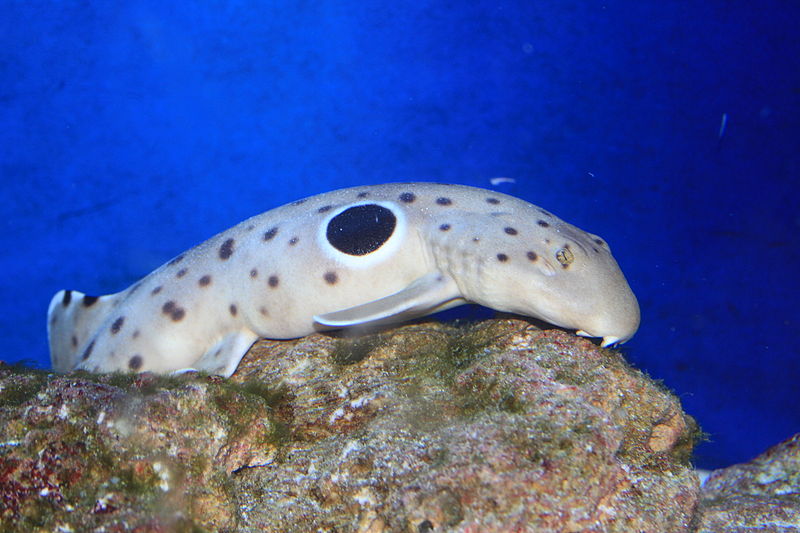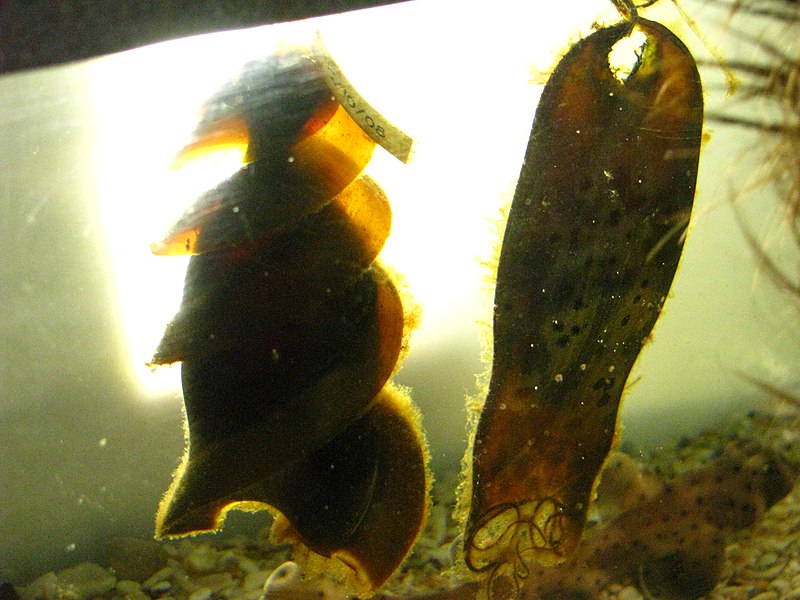Cory here. I thought I’d take my next few blogs to go over the “ins and outs” of Nudibranches. Like lots of organisms living in an aquatic system, these interesting creatures bring a host of features to your saltwater tank. And, along with the good, it’s important to point out the bad…and the down right ugly things about nubibranches in your aquarium too.
The Bad:
Nudibranches target Montipora, Zoanthids, and Softies
There are so many coral eating organisms, Butterflies and Angelfish are the obvious ones. However, some of the worst pests are ones that you can barely see. Flatworms and Red bugs are most notorious for destroying Acropora species. However, Montipora species have their own pest: a Nudibranch.
 They are hard to see, especially if you do not know what you are looking for. The largest I have seen was a half centimeter in length, tucked behind a crevice in the coral. They are always near a piece of the coral that is in the process of dying. This particular nudibranch feeds only on Montipora tissues, more commonly the plating varieties such as Montipora capricornis. They lay their eggs in a spiral or cluster, on the underside of the coral. Usually hatching within a few days, depending on water conditions, they immediately begin munching on the coral tissue. A couple adult Nudibranches can easily consume a one inch frag in 24 hours.
They are hard to see, especially if you do not know what you are looking for. The largest I have seen was a half centimeter in length, tucked behind a crevice in the coral. They are always near a piece of the coral that is in the process of dying. This particular nudibranch feeds only on Montipora tissues, more commonly the plating varieties such as Montipora capricornis. They lay their eggs in a spiral or cluster, on the underside of the coral. Usually hatching within a few days, depending on water conditions, they immediately begin munching on the coral tissue. A couple adult Nudibranches can easily consume a one inch frag in 24 hours.
There isn’t a simple way to eradicate them. Dipping the corals in a Lugols Iodine or Tropic Marin Pro Coral Cure solution will help to loosen the nudibranches, so they can be extracted. The dip however, will not kill the egg mass. The eggs must be removed immediately using a scraper, toothpick, or a toothbrush. Any portion of the coral that has died or seems to be infected should be cut off just in case there are eggs imbedded in the skeleton.
Nudibranches are also commonly found feasting on Zoanthid polyps. These particular types of Nudibranches are especially hard to find because they look very much like the polyp that they are eating, even matching the color in most cases. Zoanthids commonly close and stay closed for days, eventually polyps begin to disappear. This is usually the first sign of infection. Again, like the Montipora Nudibranches, dips will only remove the adults, leaving the eggs behind. The eggs are usually laid on the underside of the poylps, but can also be found on the rock itself.
Soft corals have many different species of Nudibranches that prey on their tissues. Some are extremely large and colorful, while others camouflage themselves, making detection extremely difficult. Like other corals, removing the adults with coral dips and manually removing the eggs when possible is the only effective way.
There are so many species of Nudibranches in the oceans, many found on the Reef and serving some purpose good or bad. We are learning more each and everyday about Nudibranches, what they eat and where they come from. We are importing corals from around the world, in some cases from areas we have never collected before. With new locations, comes new pests and most likely new Nudibranch species, good and bad.
Check back soon for the next part of this article.
Happy Thanksgiving!
Cory
 That Fish Blog – Aquarium Advice and Information
That Fish Blog – Aquarium Advice and Information

 Let me start with Brochis multiradiatus, otherwise known as the
Let me start with Brochis multiradiatus, otherwise known as the  Want something weird? Well, the first time I saw the
Want something weird? Well, the first time I saw the  dark coloration with tiny white speckles covering the front half of its body. The edges of its tail and dorsal fin are a bluish-white color. These are highly prized by breeders and collectors. These plecos only attain a size of about 4 inches. I can see how some people are absolute fanatics about this fish.
dark coloration with tiny white speckles covering the front half of its body. The edges of its tail and dorsal fin are a bluish-white color. These are highly prized by breeders and collectors. These plecos only attain a size of about 4 inches. I can see how some people are absolute fanatics about this fish. Epaulettes are very attractive, too, but they are not seen often in the trade. These sharks are also tropical, collected from Australia and the surrounding region. They are usually pale brown in color with dark spots all over and an ocellated black spot just behind the gills. They reach a size of a little over 3 feet and are usually more expensive that cat or bamboo sharks.
Epaulettes are very attractive, too, but they are not seen often in the trade. These sharks are also tropical, collected from Australia and the surrounding region. They are usually pale brown in color with dark spots all over and an ocellated black spot just behind the gills. They reach a size of a little over 3 feet and are usually more expensive that cat or bamboo sharks. Sharks and egg cases should NOT be placed in tanks of less than 180 gallons (preferably larger), and the tank should be well-established. Despite their small purchase size and relatively sedentary behavior, they grow quickly and need space to move freely and turn. The larger the tank the better (think about 3 times or more the length of the sharks adult size), furnished with some minimal rock piles and a cave where the fish can retreat and rest. You’ll also want to supply ample flow and filtration as well as a good protein skimmer. Even if you feel that the tank you already have may be large enough for the baby shark, or that you’ll have time to upgrade to a larger tank when necessary, it would be best to have an established tank of adequate size and function before considering a shark.
Sharks and egg cases should NOT be placed in tanks of less than 180 gallons (preferably larger), and the tank should be well-established. Despite their small purchase size and relatively sedentary behavior, they grow quickly and need space to move freely and turn. The larger the tank the better (think about 3 times or more the length of the sharks adult size), furnished with some minimal rock piles and a cave where the fish can retreat and rest. You’ll also want to supply ample flow and filtration as well as a good protein skimmer. Even if you feel that the tank you already have may be large enough for the baby shark, or that you’ll have time to upgrade to a larger tank when necessary, it would be best to have an established tank of adequate size and function before considering a shark. become model organisms used for
become model organisms used for 
 the secretive live rock hitchhikers known to pick off tankmates or even break aquarium glass, all while earning a following with a select few as an original showpiece. Among researchers, their powerful strikes and extremely complex eyes have made them the subject of many studies. The strike of a
the secretive live rock hitchhikers known to pick off tankmates or even break aquarium glass, all while earning a following with a select few as an original showpiece. Among researchers, their powerful strikes and extremely complex eyes have made them the subject of many studies. The strike of a  biomedical scientists some inspiration in designing medications. Scientists have recently discovered capnellene, a compound found in a species of
biomedical scientists some inspiration in designing medications. Scientists have recently discovered capnellene, a compound found in a species of  Damselfishes are generally small, brilliantly-colored and in near constant motion. These characteristics, along with their general hardiness, render them quite popular with aquarists.
Damselfishes are generally small, brilliantly-colored and in near constant motion. These characteristics, along with their general hardiness, render them quite popular with aquarists. Damselfishes seem inordinately protective of their territories, so much so that these tiny warriors will even attempt to drive off human divers! Research has revealed that several species engage in “aquatic farming, with mated pairs protecting beds of algae, a favored food. Thick mats of algae often grow within well guarded territories but are absent outside these territories, due to a large number of other fishes and invertebrates that feed upon algae.
Damselfishes seem inordinately protective of their territories, so much so that these tiny warriors will even attempt to drive off human divers! Research has revealed that several species engage in “aquatic farming, with mated pairs protecting beds of algae, a favored food. Thick mats of algae often grow within well guarded territories but are absent outside these territories, due to a large number of other fishes and invertebrates that feed upon algae.